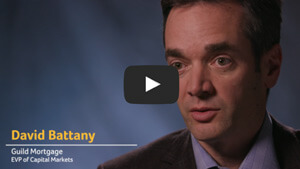Hot, Hot Labor Market
As strong as economists may have thought the job market was, it’s even stronger. In addition to headline non-farm payrolls in January (517,000) beating estimates by around 300,000, employment numbers were revised higher for the past two months. Yes, a tight labor market is anathema to any sort of quick stop to the Federal Reserve’s rate hiking cycle, but the growth rate in average hourly earnings is declining, which will be welcome news to Fed Chair Powell and his colleagues. There exists a raging debate among economists over whether we’ll need a sharp rise in unemployment to keep inflation low.
If the Fed could have predicted this robust of an employment report, would it have hiked rates by 50 bps this week? In my opinion, it would have been doubtful. The unanimous vote of policymakers to raise rates another 25 bps on Wednesday and signal that further increases are likely indicates the Fed feels confident about letting its enacted price increases trickle through the economy. Key inflation gauges in the U.S. have slipped over the past few months (inflation over the past six months has actually been less than a 2% annual rate) and consumer spending has stagnated (well, more than stagnated, as consumer spending actually declined in the final two months of the year).
The Game of “Chicken”
The Fed has pledged to keep short-term rates higher for longer in its efforts to force inflation down, and some frustration was evident from Chair Powell during his press conference at reporter’s (and Wall Street’s) continued questioning of this resolve. Here are a couple quotes: “Markets expect inflation to move down more quickly than we do,” “We have a different forecast from markets,” “Given our outlook, don’t see us cutting rates this year,” “It’s important markets do reflect tightening we are putting in place,” and finally, “We are just going to have to see if our forecast or market’s on the pace of inflation is right,” before ending his press conference at 44:55 of the scheduled 45 minutes.
There exists a raging debate among economists over whether we’ll need a sharp rise in unemployment to keep inflation low.
Fed funds futures currently see a 85% chance of another 25 basis point hike in March, with 15% handicapping no change in policy. The markets see a 30% chance of another 25 basis point hike at the May meeting, meaning broader markets still believe the Fed won’t hike overnight rates meaningfully beyond 5.00% even though the Fed Chair has repeatedly advised against playing chicken with him. While the Fed controls short-term rates, long-term rates, (e.g. 30-year mortgage rates) are a function of market expectations for the path of the economy. The yield curve continues to invert, with the 2s-10s spread at -71 bps.
Don’t Fight the Fed?
The Fed has proven throughout history its ability to bring markets to heel, but it’s the willingness of the central bank to do so which is now in doubt. Variance in future mortgage origination volume rests on who will win the current head-butting contest between the Fed and the markets. If markets “win” and more dovish predictions come to fruition, we should see more potential homebuyers come off the sidelines and the universe of refinanceable candidates increase. Higher mortgage rates have suppressed demand, and low inventories of homes for sale have helped maintain relatively flat house prices over the last several months. I truly believe that after the housing supply imbalance works itself out, we are headed for good times again in the mortgage industry.



